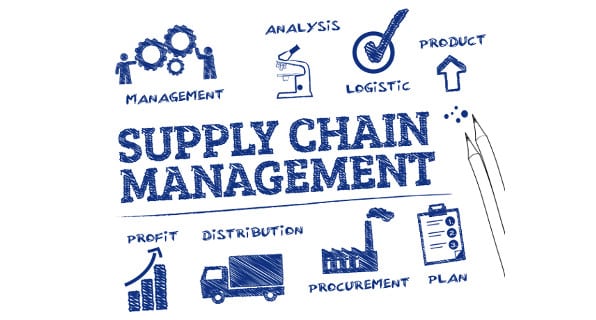Supply Chain Management is a concept that is loosely used in many facets of business, but for many we understand it simply, as a flow of products from concept to production as a cumulative effort of various organizations – managing product per customer demand to maximize customer value and sustain a competitive advantage. According to the APICS Dictionary, Supply Chain Management “(SCM) the actual definition is stated as the design, planning, execution, control, and monitoring of supply chain activities with the objective of creating net value, building a competitive infrastructure, leveraging worldwide logistics, synchronizing supply with demand, and measuring performance globally.”
As supply chains are rich in data and also, a large cost to organizations the key is to strategically plan and use advanced analytics to predict trends/patterns both customer and economic. Achieving a competitive advantage in an ever-changing, global and multi-channel marketplace with increasedunpredecatability in customer purchasing and growth of other markets continuously muddies the waters in focus and planning.
However, prioirtizing SCM brings an advantage. By looking at two avenues, management can clearly identify and prioiritize. If convenience is what a customer expects, then an organization must reflect a quickly optimized distribution network. If the customer values quality, an organization needs to shine in R&D, product life cycle management, supplier relationships and overall manufacturing processes.
Supply chain management is a value proposition my organization brings visible importance too, not only to convenience but extremely focused in quality. By managing SCM with our suppliers, customers, and partners, it is a conscious effort on everyone’s part to ensure operational efficiency – what I consider a “linking” of SCM. By linking physical and informational flow of goods, and materials, we can coordinate and meet both short term and long-term goals. These are routinely met by the control of daily initiatives from product to material.
The entire management of Supply Chain directly impacts financial allocations (identifying and measuring key performance indicators (KPIs) related to key supply chain areas). “Winning supply chains are:
- Externally focused: Knowing the competition and when and where it is appropriate to partner with third-parties.
- Agile and low-cost: Continuously baselining and benchmarking by using KPIs and key result areas (KRAs) to identify cost savings.
- Lean: Finding operational efficiency improvements (http://ww2.cfo.com/supply-chain/2015/11/big-data-latest-rage-supply-chain-management/)”.
In addition, at Valtronic we utilize a policy deployment structure allowing for a LEAN manufacturing processes as well. By managing daily initiatives: Quality (first pass yield), Delivery (on time delivery), Returns and Past Due. Our risk analysis determines if we are meeting customer demand and that our inventory is up-to-date to ensure we do not lose time on manufacturing or productivity among production staff.
For more information on Valtronic’s Supply Chain Management & Quality Management Systemsplease click above or visit our web site at www.valtronic.com
Thank you and I look forward to your comments!


